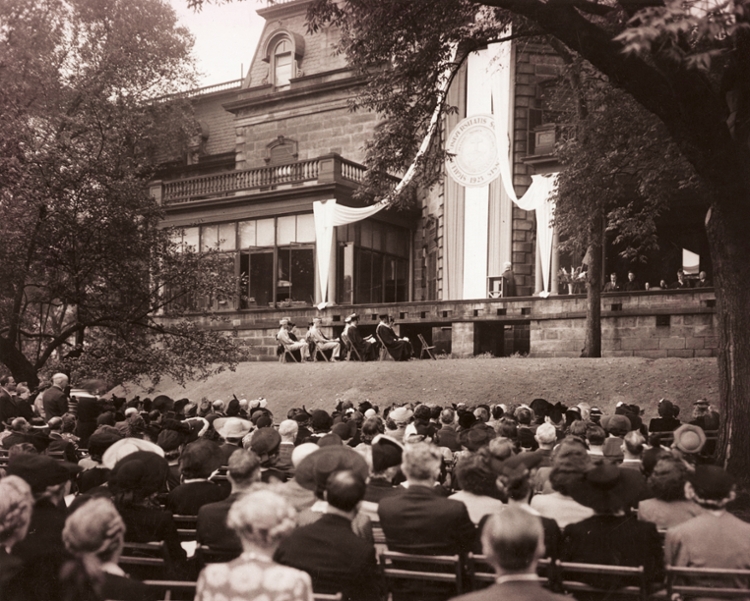History of University of Scranton Book Published

“A Legacy to Hold, A Future to Build,” published in 2014, chronicles the significant moments in the 125-year history of The University of Scranton. The 126-page bound “coffee table” book includes more than 140 color and black and white photographs.
The story of the University is told from its beginning in 1888 with the blessing of a single block of granite by the Most Reverend William G. O’Hara, D.D., the first Bishop of Scranton, in the hope of providing an opportunity for higher education in the Lackawanna Valley. St. Thomas College admitted its first students four years later.
Diocesan priests and seminarians staffed the college until 1896. It was then staffed by the Xaverian Brothers for one year. From 1897 until 1942 the school, which was renamed The University of Scranton in 1938, was administered for the Diocese by the Christian Brothers. In the late summer of 1942, at the invitation of Most Reverend William Hafey, D.D., 19 Jesuits, led by Rev. Coleman Nevils, S.J., the newly appointed president, arrived on campus to administer the University.
The Jesuits restructured and strengthened Scranton’s traditional and pre-professional programs with an emphasis on the liberal arts, which are the foundation for every program at a Jesuit university. The University flourished under the Jesuits, growing from a primarily commuter school with fewer than 1,000 students to a broadly regional, comprehensive university with a total enrollment of more than 6,000 students in undergraduate, graduate and nontraditional programs.
Sections of the book are “In the Beginning,” “A Jesuit Institution,” “The Classroom and Beyond,” “Arts and Activities,” “An Evolving Campus” and “For and With Others.”
For additional information, visit scranton.edu/historybook.






